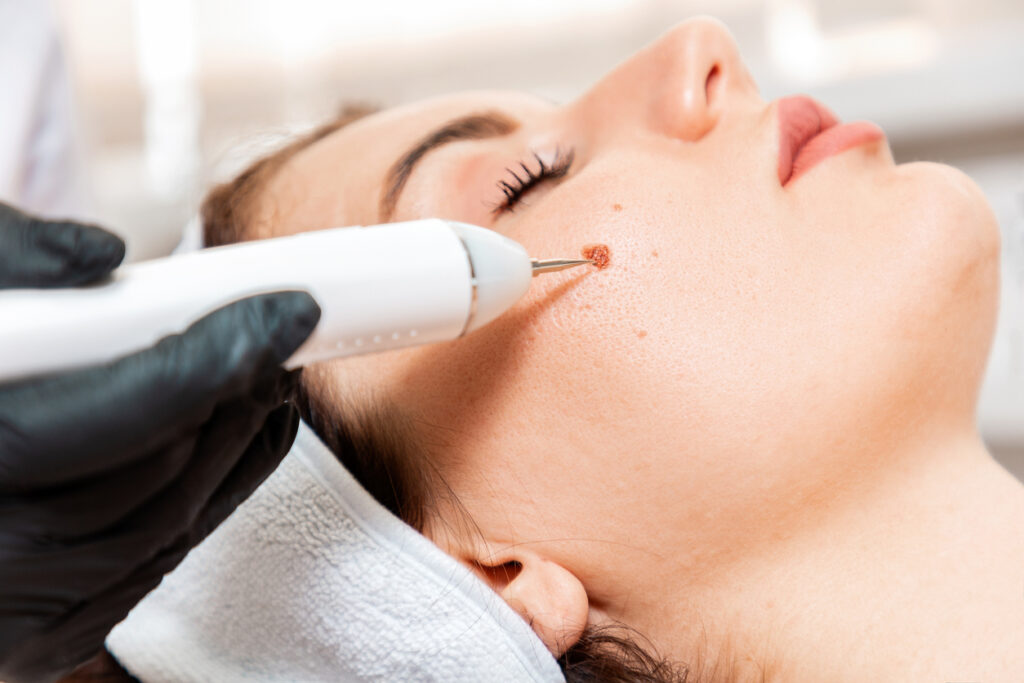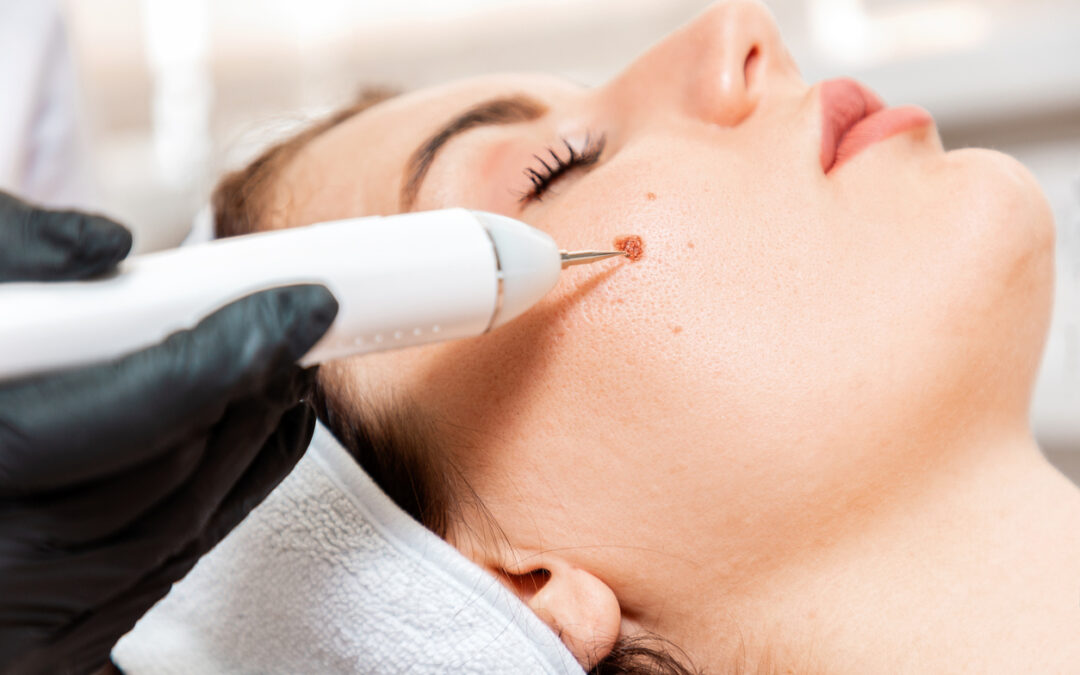Moles are a common type of skin growth, often appearing as small, dark spots caused by clusters of pigmented cells. While most moles are harmless, it’s essential to understand the different types and know when you should consult a dermatologist.
At White Rock Dermatology, we provide comprehensive care and education about various skin conditions. Let’s dive into the four common types of moles and learn when it’s time to seek professional help.
1. Common Moles
Common moles, also known as nevi, are typically uniform in color, round, and less than a quarter-inch in diameter. They can be brown, tan, black, or pink, and they can appear anywhere on your body. While usually benign, if you notice any changes in size, shape, or color, it’s recommended to consult with a dermatologist. 
2. Atypical Moles (Dysplastic Nevi)
Atypical moles, or dysplastic nevi, are usually larger than common moles and have irregular shapes and borders. They often appear in mixed colors, including pink, red, tan, and brown. While not necessarily cancerous, people with atypical moles have a higher risk of developing melanoma. Regular check-ups are crucial for those with atypical moles. You can learn more about dysplastic nevi and their connection to melanoma on our moles services page.
3. Congenital Moles (Congenital Nevi)
Congenital moles are present at birth or appear within the first year of life. The size varies from small to large, and they can appear anywhere on the body. The larger ones have a higher risk of developing into skin cancer and should be monitored regularly.
4. Spitz Nevi
Spitz nevi are uncommon moles that often appear in children and teenagers, but they can also develop in adults. They are typically raised, dome-shaped, and pink or red. While usually benign, Spitz nevi can sometimes be difficult to distinguish from melanoma, so it’s essential to have them examined by a dermatologist.
When to See a Dermatologist?
If you notice a new mole or any changes in the size, shape, color, or texture of an existing mole, it’s time to see a dermatologist. Other warning signs include itching, bleeding, or pain related to a mole.
At White Rock Dermatology, we offer comprehensive skin examinations to evaluate any concerning moles or skin changes. Our experienced dermatologists use advanced diagnostic tools to identify potential issues and provide personalized treatment plans. You can get in touch with us through our contact page.
In conclusion, understanding the different types of moles and their potential risks is crucial for early detection and treatment of skin cancer. Remember, regular self-examinations and professional skin checks are your best defense against skin cancer. Trust White Rock Dermatology for your skincare needs – because everyone deserves healthy, beautiful skin.


Recent Comments